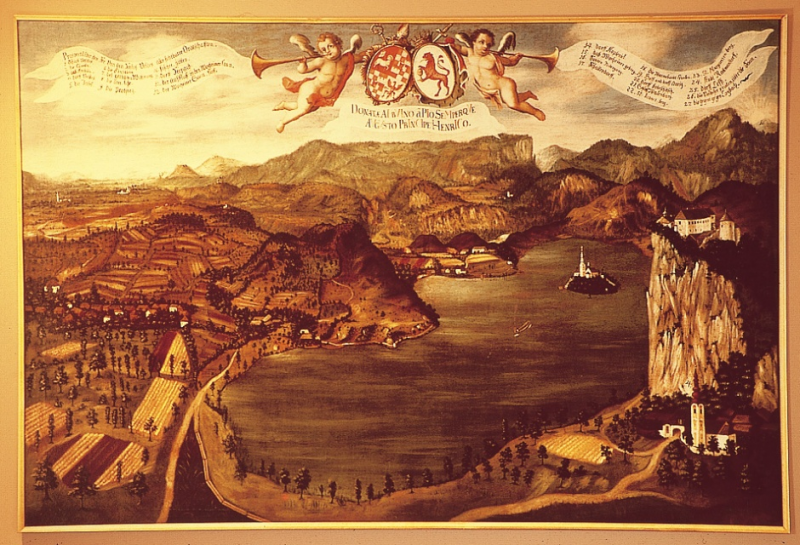The history of Bled
The fertile land, the protective shelter of the castle hill and the island, have always invited the settlement of the Bled area. The first, and still rare traces of humans in Bled, date back to the Stone Age. In the Iron Age, when the mining of iron began in the Alpine regions, settlement increased.
Beneath the layer of an already discovered Slavic necropolis at Pristava pod Gradom, archeologists discovered 80 gravesites from the late Iron Age (800 to 600 BC) - Celtic and Roman finds however, are more modest. Bled was later well populated by the Slavs, who arrived in two waves. The Slavic settlements were most probably located at exactly the same spots where the lakeside villages of Mlino, Želeče, Zagorice, Grad and Rečica formed in the late Middle Ages.
A number of gravesites are well known: Žale - the site of the modern day cemetery (archeologically excavated in 1894), the park at the current Vila Bled (1929), the necropolis in Želeče (1937), the large necropolis at Pristava pod Gradom (1948 to 1951), the gravesites next to the current parking area below the entrance to the castle (1960, 1968) and the necropolis on Bled island (1962 to 1966).
Slavic settlement
The first wave of settlement of the Bled area occurred in the 7th century, the next reached the Bled basin during the 9th and 10th centuries. Finds from the first settlements illustrate the culture of the Old Slavic state of King Samo (632 - 658) and the late antiquity traditions in these lands. Finds from the second wave of settlement, such as ornaments found in gravesites include enamelled and engraved earrings in the shape of a half-moons, circlets, round brooches and iron knives. These artefacts indicate the historical development of Bled up to the 10th century and some of these can be seen on exhibition at the Castle museum.
The bishops of Brixen
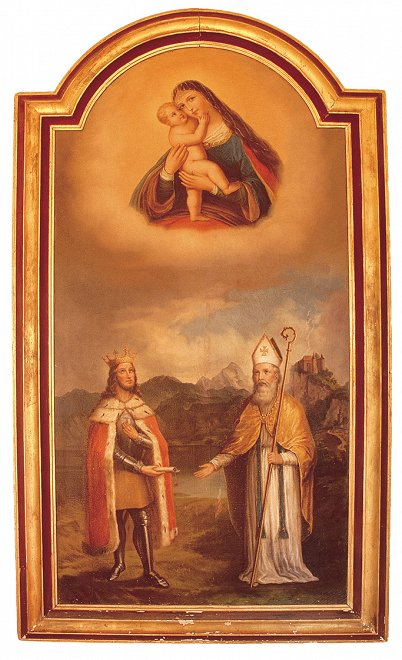
After the fall of the Old Slavic state, Bled with its surrounding area fell under Frankisch (Charlemagne 782) and later under German rule. In 1004 the emperor Henrik II divided the lands between the two Sava rivers, and in 1011 awarded Bled Castle, to Bishop Albuin of Brixen - a photocopy of the original title deed can be found in the collection at the castle. This action was a major turning point in the history of Bled. The keepers of the castle were bonded knights, who upheld feudal authority in the name of the bishops.
As a result, great changes occurred in the forming of estates and the settlement of the region. In the middle of the 14th century the Bishops of Brixen gave up direct administration of their properties in Bled and leased them to the chief administrators at the time, the von Kreigh family. Because of encroachment on their rights and brutal treatment and oppression, in 1515 the peasants joined the fight for the "old justice" in a pan-Slovene revolt.
In 1558 a new holder, the Protestant protector Herbert VII of Auersperg, took over the castle. Until the middle of the 18th century the lessors were exclusively aristocratic; later these also included townsmen, but they rarely lived in the castle. In 1803, after 800 years of Brixen rule, Bled passed into state ownership by a decree of the Court Commission in Vienna.
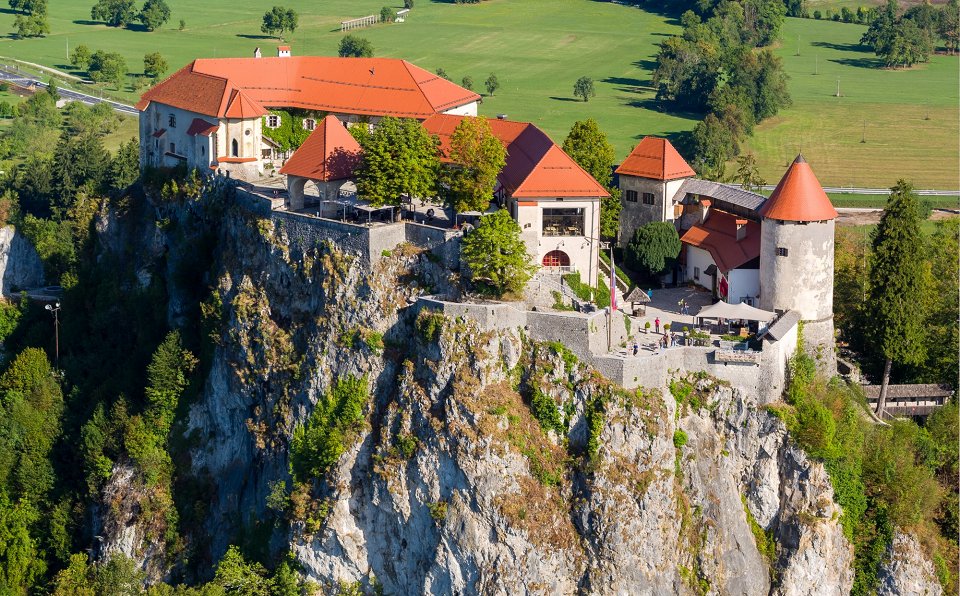 © Vizualist
© Vizualist
From 1809 to 1813, it was included in Napoleon's Empire as part of the Illyrian provinces, then it came once again into the hands of the Austrian Emperor who returned Bled to the bishops of Brixen for the last time in 1838. With the abolishment of the feudal system ten years later, the estate lost its character of a feudal economic and social unit. In the second half of the 19th century, Bled changed considerably. The characteristic villages of Gorenjska, which had been autonomous units ever since the Middle Ages, were united. Income decreased, and in 1858 Brixen sold the Bled estate to Viktor Ruard, the owner of the Jesenice Ironworks. He kept the castle, the lake and the usable land around it, and sold the rest to the Kranj Industrial Company. In 1882 Ruard sold the estate to a Viennese wholesale merchant named Adolf Muhr, and in 1919 Bled hotelier Ivan Kenda bought the castle with the lake - for the first time the property passed into Slovenian hands. In 1937 it was taken over by the Associated Commercial Bank and finally bought by the Drava Province. During World War II, Bled was used to house the German military and civil headquarters, and in 1960 it acquired the status of a town.
The town of Bled we know today was composed as several small villages located around the lake basin. These villages Grad, Mlino, Rečica, Želeče and Zagorice emerged in the early Middle Ages. In the past hundreds of years, they gradually grew due to industrialization and tourism and finally merged to form a single settlement.
The history of tourism
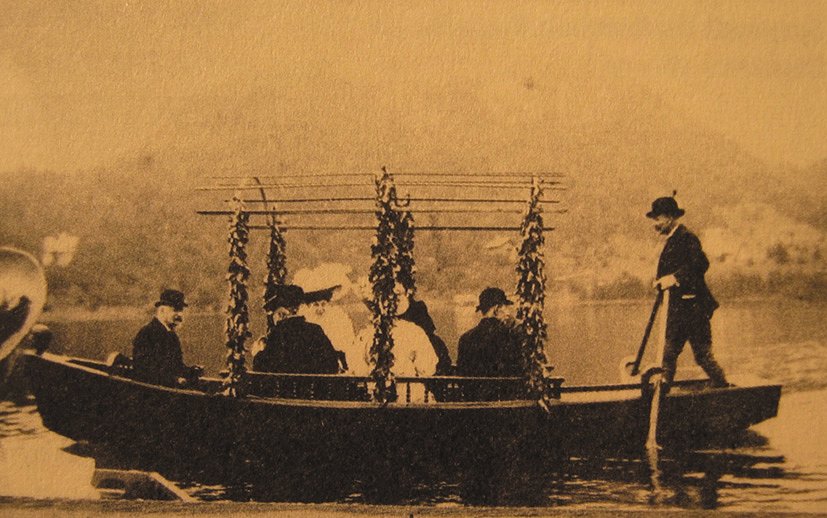
The beginnings of tourism
The first visitors to Bled were pilgrims from Carniola, Carinthia, Styria, the Slovenian Littoral, Friuli and Austria who came to see the Church of the Assumption on the island. In addition to performing their religious devotion, they also admired the beauty of the place and attracted an increasing number of pilgrims with their tales of adventure. In addition to these more simple folk, noblemen also visited Bled. Janez Vajkard Valvasor, a local aristocrat and polymath from Carniola, wrote a book entitled "The Glory of the Duchy of Carniola!" in 1689, in which among other things, he reported on the thermal springs at Bled. Due to the arrival of a large number of people who were seeking health and to whom he had to attend to, the castle administrator, Weidmann, wanted to destroy and fill in these springs - fortunately he was prevented from doing so. People continued coming to bath and, as Valvasor said, to regain their health.
In addition to Weidmann, the subsequent castle administrator, Ignac Novak, also represented a great threat to the development of the spa and other tourism in Bled. In the years from 1782 to 1787 he proposed many times that the lake should be dried out in order to acquire fertile fields, and to obtain clay from the lake bottom to use as a raw material for the brickworks. Novak's proposal was refused by the Carniolan Provincial Assembly. In 1822, the springs were covered with a simple sheet. Since they were not particularly warm (23 ° C), more and more visitors, who did not care about the healing springs came to Bled, to admire the idyllic beauty of the landscape.
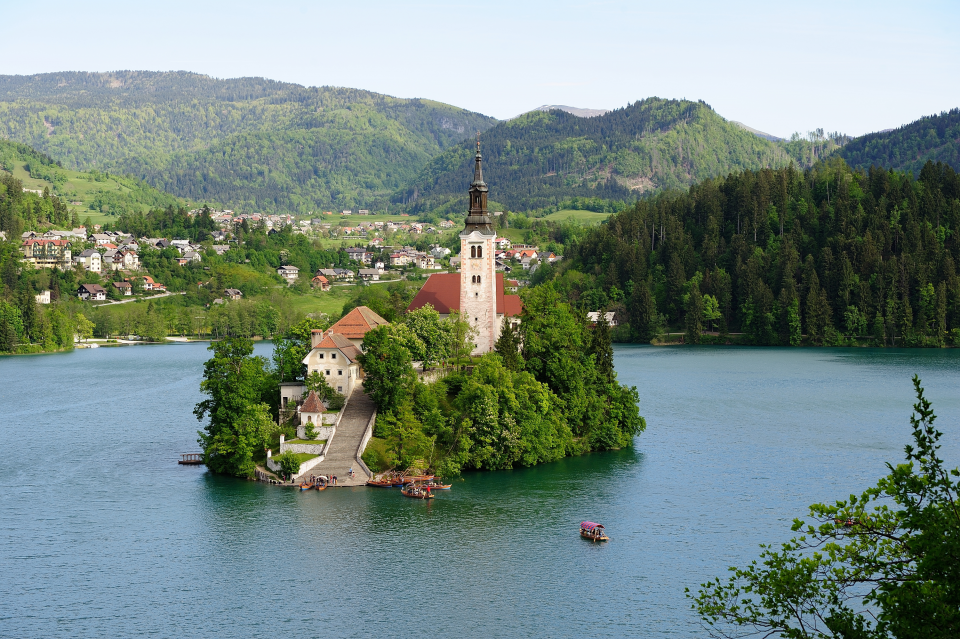 © Tomaž Sedej
© Tomaž Sedej
Bled, not for the healing waters, but to admire the idyllic landscape increased. The famous English naturalist Sir Humphrey Davy described Bled as "the most beautiful place he had seen in Europe". During the time of awakening of Slovene national consciousness, the young and the old came to visit Bled and with nationalistic zeal, searched for the temple of the Slavic goddess Živa and the shadow of her priestess, the beautiful Bogomila hiding in the harmonious contours of the island church.
Arnold Rikli
The beginnings of intensive tourism date to 1855. A Swiss healer named Arnold Rikli was one of the first people to recognise the value of Bled's climate and its advantageous position for a long swimming season. He founded the Institute of "Natural Healing" and introduced a new method of treatment. If he wanted to attract guests, he needed baths, nicely arranged walking paths, excursion points and accommodation facilities. In 1895 Rikli ordered the building of simple wooden Swiss-style baths opposite the then Hotel Park (today's Kazina), with a Health Institute in which he had his office, kitchen, dining room and administrative offices. For patient accommodation he also had constructed huts in the chestnut-ringed park, which were a characteristic part of his treatment method. Due to increasing interest among patients, new, larger baths were constructed in 1899. Bathing in the lake and in the baths constituted an integral part of Rikli's treatment method. For this, two cold springs with temperatures of 10°C and 15.6°C were used. He also recommended warm baths and steam baths. In addition, sunbathing on the bath galleries was obligatory. Walks were part of his healing programme. He selected several excursion points in the Bled area and categorised them according to degree of difficulty. At these locations he built courses for bowls and skittles. Rikli maintained strict house rules which all patients were required to observe. Early rising (between 5.00 a.m. and 6.00 a.m.) was followed by walks and physical activity in fresh air. Patients took their breakfasts with them. To improve circulation, they walked barefoot on dewy grass.
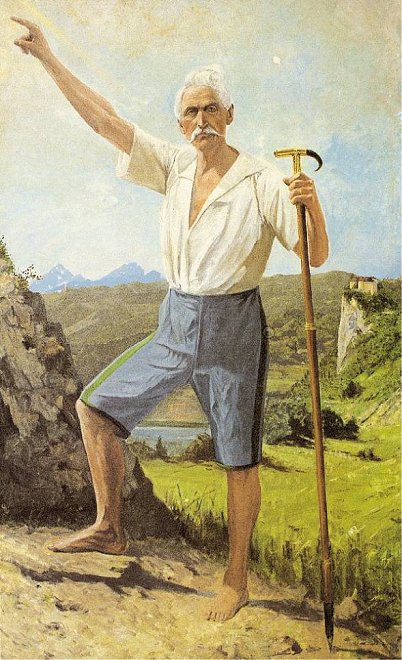
After one hour´s rest, at about 10.00 a.m. they bathed and sunbathed. During the midday break which lasted until 2.00 p.m., they took a modest lunch and then continued bathing, sunbathing and taking long walks. At 5.30 p.m. they had dinner and only after that, were they free to do what they wanted. Their nutrition was vegetarian - meat was found on the menu only exceptionally, and at additional cost. Rikli spent a full 52 years in Bled. During this time he was, as Dr. Mirko Kalin emphasises, one of the most renowned naturopaths for atmospheric treatment. According to Dr. Kalin, Rikli's treatment was effective against many diseases: for example, rheumatism, migraines, insomnia, hysteria, anemia, poor blood circulation and obesity. In addition to Rikli's patients, Bled attracted more and more people who wanted to spend their holidays in a healthy and above all beautiful environment.
In 1870, with the construction of the Trbiž-Ljubljana railway line, Bled obtained its railway station at Lesce, at which express trains stopped, and with them many passengers. In 1903, Bled received the Gold Medal at a large international exhibition of spas in Vienna, and in 1906, it was officially classified amongst the important tourist spots in Imperial Austria.
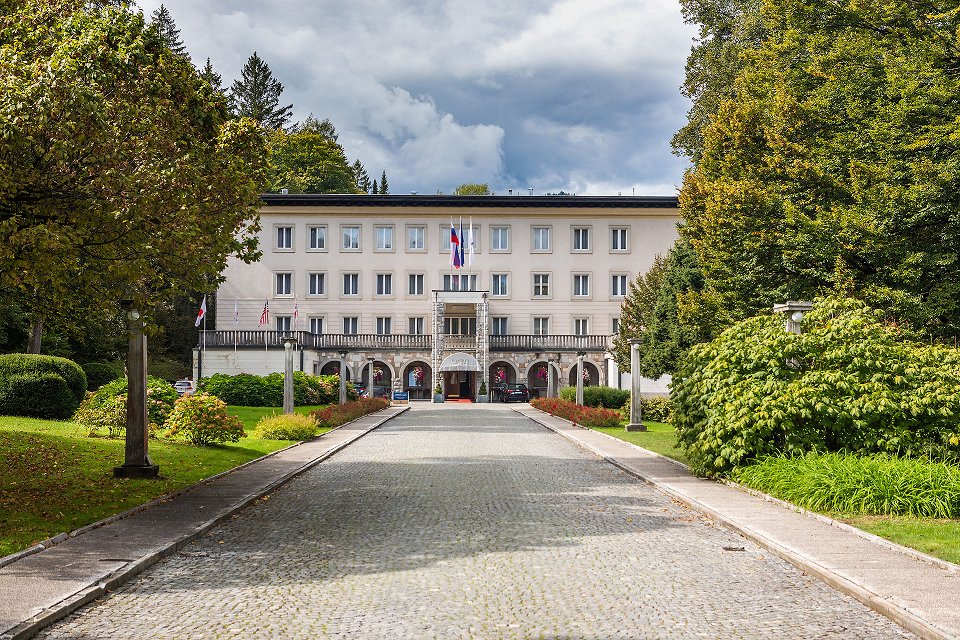 © Jošt Gantar
© Jošt Gantar
Between the two world wars, Bled remained the most cosmopolitan resort in Yugoslavia and a beloved royal family Karađorđevićs' summer residence. It was visited by many domestic and foreign guests. It became the centre of political and diplomatic life in the summer months. After the Second World War, the locals continued with the tourist tradition, took over and renovated most of the catering and tourist-recreational facilities. Since the Yugoslav president Tito's had his residence in Villa Bled, many statesmen, politicians and cultural workers from home and abroad visited Bled. Villa Bled has been later converted into a hotel of the highest category and can accommodate the most demanding guests.
Arnold Rikli is not forgotten. His followers built a monument on hill Straža to commemorate him on the occasion of the 50th anniversary of his healing resort. The Bled Tourist Association built a monument in the Spa Park to commemorate him on the occasion of the 125th anniversary of his healing resort. His methods, combined with modern therapy, are still practiced today at the Rikli Balance Hotel in medico-regenerative programs.
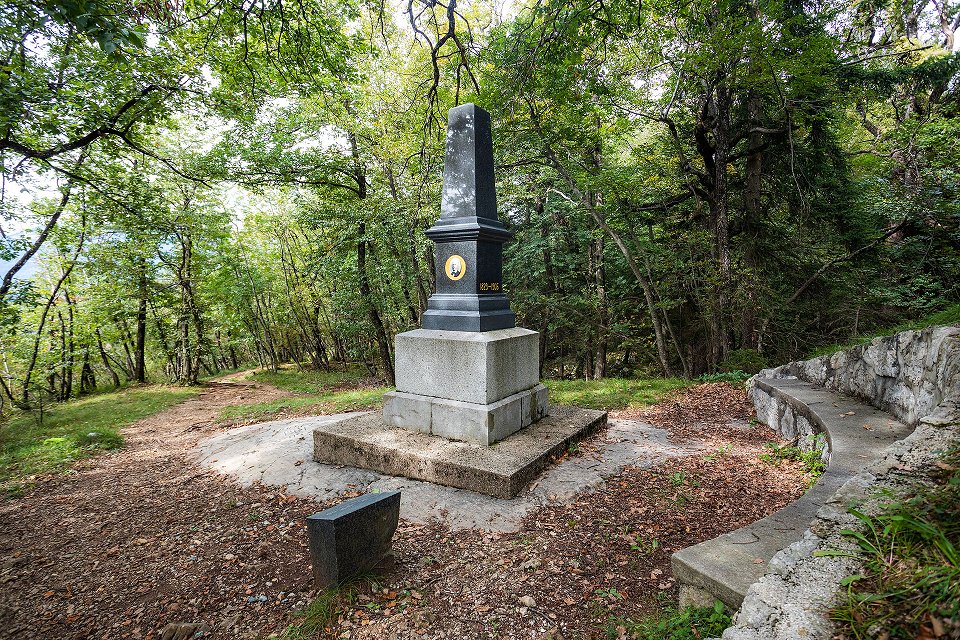 © Jošt Gantar
© Jošt Gantar

